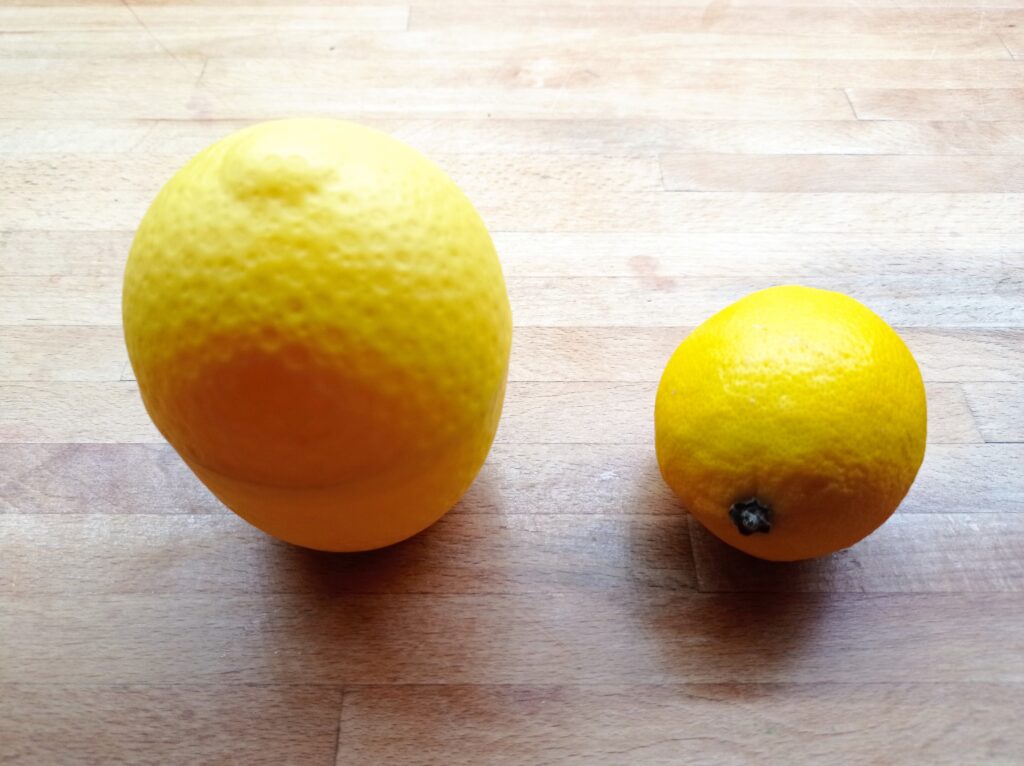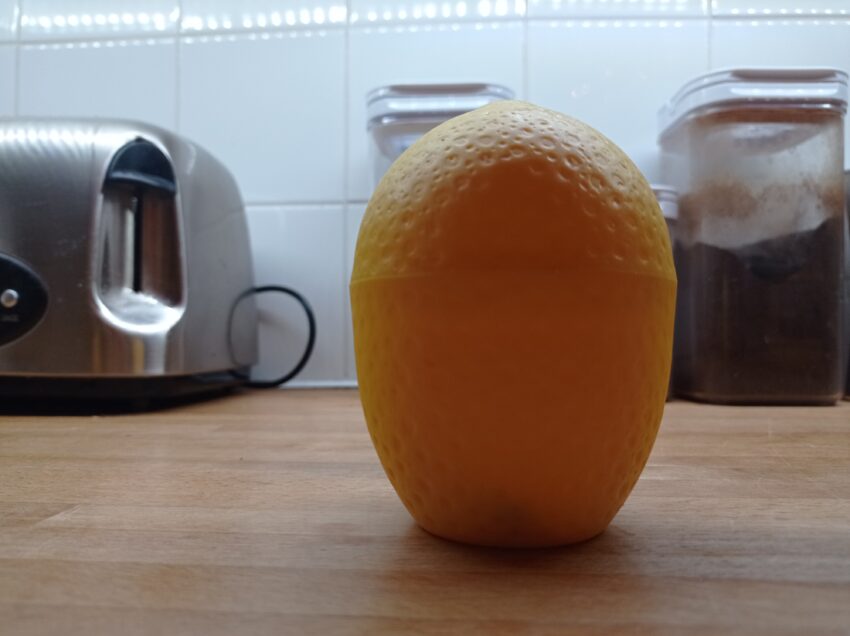Andrew Myers
If you were to inhabit the body of an insect while retaining all the vital aspects of human intellect and perception, and find yourself on one of the vertical surfaces of the present writer’s kitchen, while a dish involving fish or seafood is being prepared, or indeed during any activity, culinary or otherwise, requiring the presence of a yellow citrus fruit, then be prepared to hear the following exhortation ring out, strident as a clarion: ‘CHECK THE FAKE PLASTIC LEMON!’
This is the story of how this mantra came about.
Like any obsession, it started innocently enough.
What do you do with those leftover bits of lemon? You’ve squeezed it over your fillet of swordfish or whatever. You hate food waste, so now you have a problem – what to do with that half a lemon?
Not so difficult: you put it in the fridge. The half lemon keeps the inside smelling fresh, absorbing all the odours and whatnot.
Problem solved – or so we thought. I found my attention drawn to the way the lemon wedges, left long enough, would transform themselves in the most gradual yet marvellous manner, shrivelling and taking on a desiccated hue – a fridge-change into something rich and strange.
Fascinated by this metamorphosis and its commentary on mortality and the passage of time, I couldn’t bring myself to throw out the dried pieces of fruit. But it didn’t stop there. I hoarded more lemons at various stages of dehydration, until I had built up a many-splendoured spectrum of shades, from pale primrose to a deep burnished amber reminiscent of a Dutch still life.
I would stare at my cold dry bits of lemon for minutes on end, carefully arranging them in order of their ageing, only to mix them up again, appalled by my tendency towards order and control.
There must have been a point when we agreed a line had been crossed. Perhaps when, to fuel my mania, I started buying one or two more lemons than strictly necessary, perhaps when an entire shelf in our already cramped fridge was taken up by my investigations into the drying out of citrus matter.
A friend presented us with the gift of a hollow plastic lemon-shaped container, in a garish primary yellow far from the rich gold of the genuine citrus fruit. The top half screws off, you put your lemon segments inside, and no need to keep them on the shelf anymore.

It was a melancholy day when, under the watchful eye of my wife, I ceremonially tipped the shelfful of lemon corpses – months of work – into the bin.
It seemed like the dawn of a brave new era of lemon storage. But it didn’t take long for the shortcomings of this new method to present themselves. Instead of drying out cleanly, the lemon pieces went mouldy, moisture having no way to escape from the tightly-sealed sarcophagus. Like squirrels, we would forget we had hidden our fruit, and soon found ourselves having to deal with putrid green lemon soup. Hence the urgency behind the cry, ‘Check the fake plastic lemon!’
It was a while before the full significance of this image struck me. The real lemon, trapped inside a fake version of itself, rotting while presenting a bright plastic façade to the outside world. All that is true and beautiful wasting away behind the masks demanded by society. The fake plastic lemon is all of us doomed to live inauthentic lives of dislocation and self-alienation.
Perhaps such insights only come to you when you are ready. The treacherous container remains a central feature of our fridge to this day.
Epilogue
I have a half lemon in my hand, left over from garnishing my noodles and baked beans. I open the fridge. The fake plastic lemon is full. Smiling wistfully, I hide the surplus chunk of citrus limon behind a four-year old jar of pear chutney. Folly – it will be found and discarded long before there is any chance of its acquiring the luminous saffron and ochre tints of my memory. But I allow myself the lapse. I allow myself to fool myself. For if I have learned anything from this episode, it’s that when life gives you fake plastic lemons, you simply have to make fake plastic lemonade.

